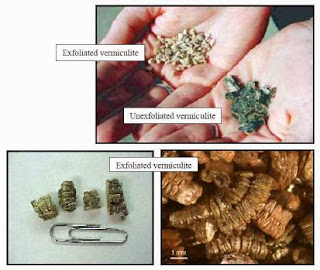Discussions around asbestos and the health problems it causes have
started incorporating discussions of vermiculite as well. So, what is
vermiculite?

Vermiculite is a natur
Vermiculite reacts to heat in an odd way. It expands. Not just expands, but EXPANDS! It will grow in size by a factor of 8 to 30 times the original size. On top of this, the material is also heat and fire resistant. If these characteristics sound somewhat familiar, then they should. The heat and fire resistant nature of vermiculite is similar to what is found with asbestos, but not on as effective a scale.
Vermiculite is not, in and of itself, a material that is considered to carry any health risks as we see with asbestos. Then why does the material get so much bad press? Well, the answer is found in where vermiculate was mined for 50 plus years until 1990. It was found in a little town called Libby, Montana, which should set off red alerts and clanging bells in your head.
Libby, Montana is the home of a huge mine that is [in]famous. The mine produced 50 years worth of vermiculite with plenty to spare. So, what is the problem? Well, the mine also produced the vast majority of asbestos during the same period of time. With both materials being mined at the same time, there is little surprise that the vermiculite coming out of the mine has been found to have high levels of asbestos in it. Since this material was used in home insulation products, it is now believed that over 70 percent of all homes with such insulation have an asbestos problem.
What is vermiculite? When isolated, it is a good material for heat resistant applications. Historically, however, it has been contaminated with asbestos in the U.S. market and is a health risk. If you have vermiculite insulation, get it tested immediately.





Post a Comment